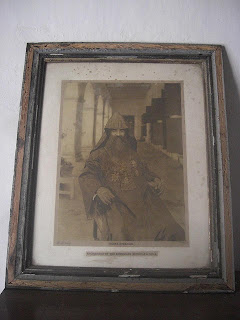Bangladesh National Museum
DHAKA
The Bangladesh National Museum originally established on 20 March 1913, albeit under another name, and formally inaugurated on 7 August 1913, was accorded the status of the national museum of Bangladesh on 17 November 1983. It is located Shahbag, Dhaka. The museum is well organized and displays have been housed in several departments like department of ethnography and decorative art, department of history and classical art, department of natural history, and department of contemporary and world civilization. The museum also has a conservation laboratory.
Ground floor
The ground floor consists of some old guns in the entrance and the hall where the people book their tickets or assemble to hear the history of the museum. The hall leads to a grand staircase. Beside the hall there is a smaller room which also acts like the hall (it is also used by the guides to tell the visitors about the history) and a simple staircase.
Frist floor:
The 1st floor is divided into 22 rooms.
1st room: The first room consists of a large map showing the map of Bangladesh and the 64 districts.
2nd room: The 2nd room consists of an under going work of a large statue of the Royal Bengal Tiger.
3rd-10th room: These rooms consists of natural beauties found in Bangladesh. In one of the room there is showcase of a tongue of a whale.
10th-22nd room: The other rooms contains some historic relics of Bengal up to 1900. There is a room which shows the different boats used by the rural people.
2nd floor:
The 2nd floor consists of photos of famous people and showcases the Bangladesh Liberation War and the Language Movement of 1952. There are posters used in the war, a torture machine and much more. There are also two libraries.
3rd floor:
The 3rd Floor consists of Pictures of International politicians, artists, scientists, famous pictures and three international galleries- Korean, Iranian and Swiss.
Gallery Index
1. Bangladesh in Map
2. Rural Bangladesh
3. Sudarbans
4. Rocks and Minerals
5. Plants of Bangladesh
6. Flowers Fruits and Creepers
7. Animals
8. Birds of Bangladesh
9. Mammals of Bangladesh
10. Elephant
11. Life in Bangladesh
12. Boats of Bangladesh
13. Tribes of Bangladesh 1
14. Tribes of Bangladesh 2
15. Potteries
16. Archaeological Artifacts
17. Sculpture 1
18. Sculpture 2
19. Architecture
20. Inscriptions
21. Coins, Medals and Ornaments
22. Ivory Works
23. Arms and Weapons
24. Metal Works
25. Porcelain and Glass Ware
26. Rest Room
27. Dolls
28. Musical Instruments
29. Textile and Costumes
30. Embroidered Quilt
31. Wood Carvings 1
32. Wood Carvings 2
33. Manuscripts and Documents
34. Traditional and Miniature Painting
35. Shilpacharya Zainul Abedin Gallery
36. Contemporary Art 1
37. Contemporary Art 2
38. Bangladesh's Struggle for Independence Bangalee Bangladesh War of Libaration-1 39. Bangladesh's Struggle for Independence Bangalee Bangladesh War of Libaration-2
40. Bangladesh's Struggle for Independence Bangalee Bangladesh War of Libaration-3
41. World Civilization
42. Western Arts
43. Portraits of World Intellectuals
44. a. Chinese Corner
b. Korean Corner
c. Iranian Corner
d. Switzerland Corner





















































